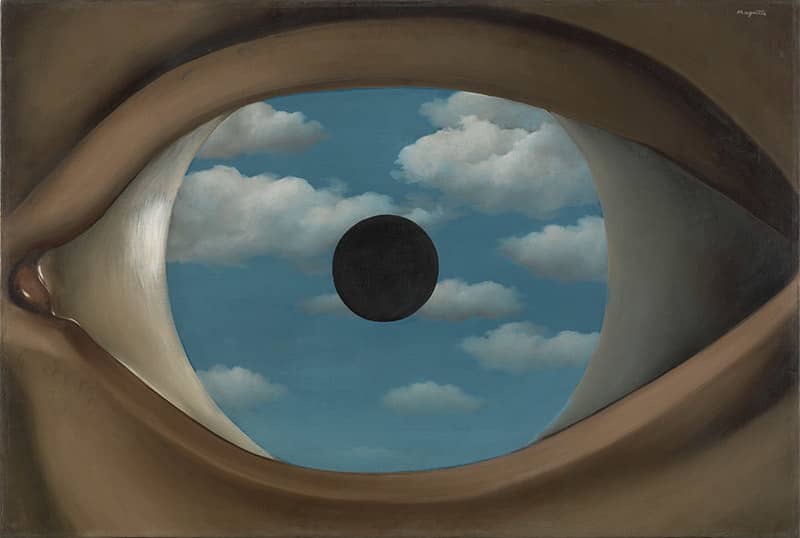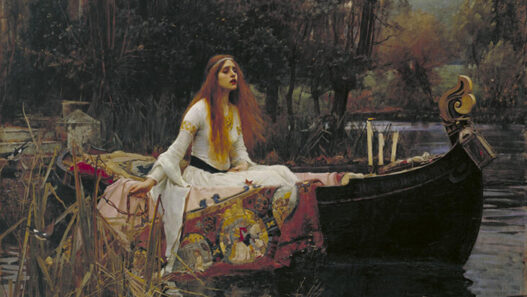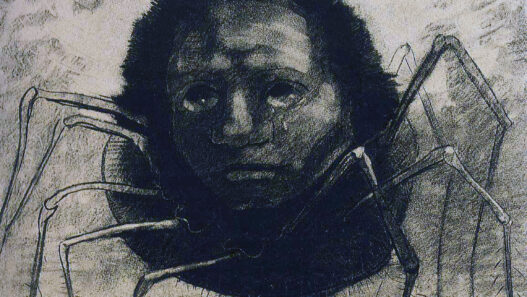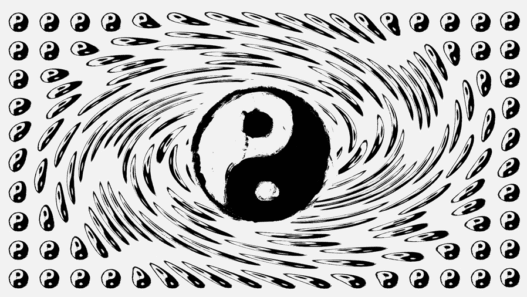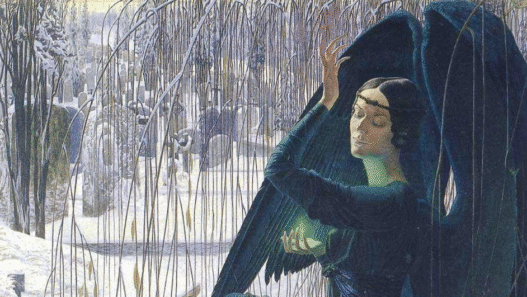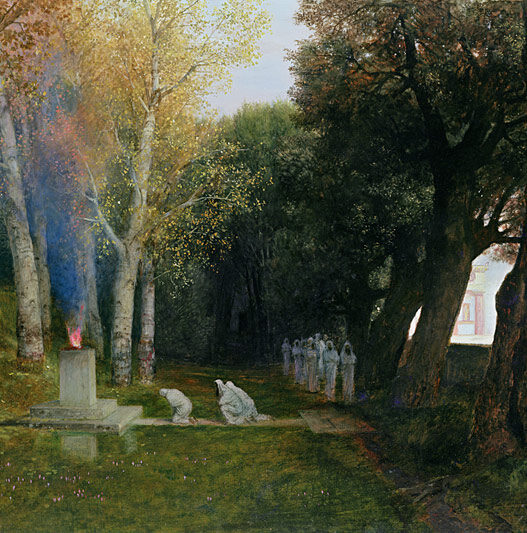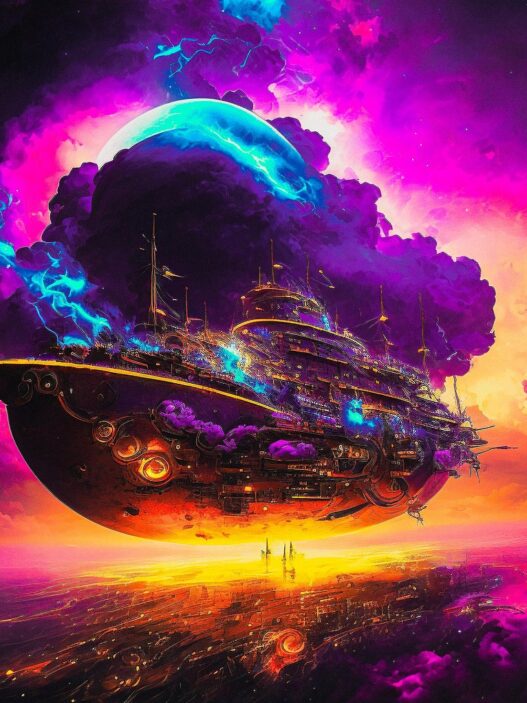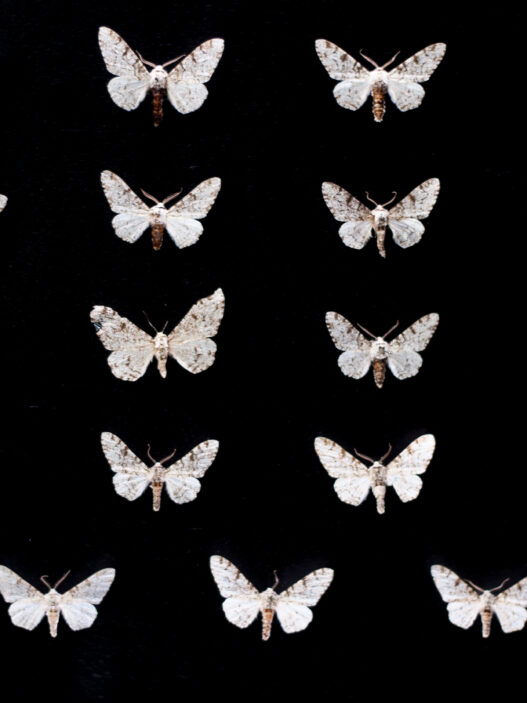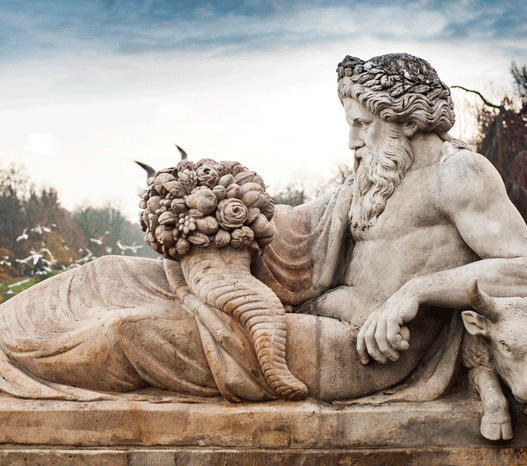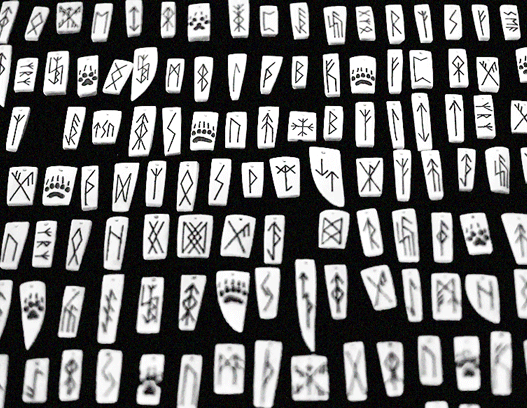Greek mythology continues to captivate audiences with its complex pantheon of gods, heroes, and monsters. These ancient Greek myths are more than mere stories. They shape everything from Renaissance paintings to modern visual culture.
Greek mythology has inspired some of the most iconic artworks in history. Botticelli’s The Birth of Venus captures divine beauty. Caravaggio’s Narcissus explores tragic self-obsession.
Raphael’s Triumph of Galatea bursts with mythic energy. Rubens brings intensity to both Leda and the Swan and Prometheus Bound, exploring desire and defiance. Caravaggio’s Medusa freezes terror in time. Each painting reimagines myth through the artist’s emotional lens. These works keep ancient stories alive through powerful visuals.
What You’ll Learn About Greek Mythology
The symbolic meaning of Athena’s olive tree in Greek art
The psychological journey behind Theseus and the Minotaur
How the Phoenix and Prometheus symbolise rebirth and resistance
Symbolism in Greek Mythology
The Olive Tree
Gifted to the city of Athens by the goddess Athena, the olive tree is a timeless emblem of peace, prosperity, and wisdom. Its deep roots and enduring fruit have made it sacred. The olive tree holds significance not only in myth but also in everyday Greek life. It has been valued for thousands of years.
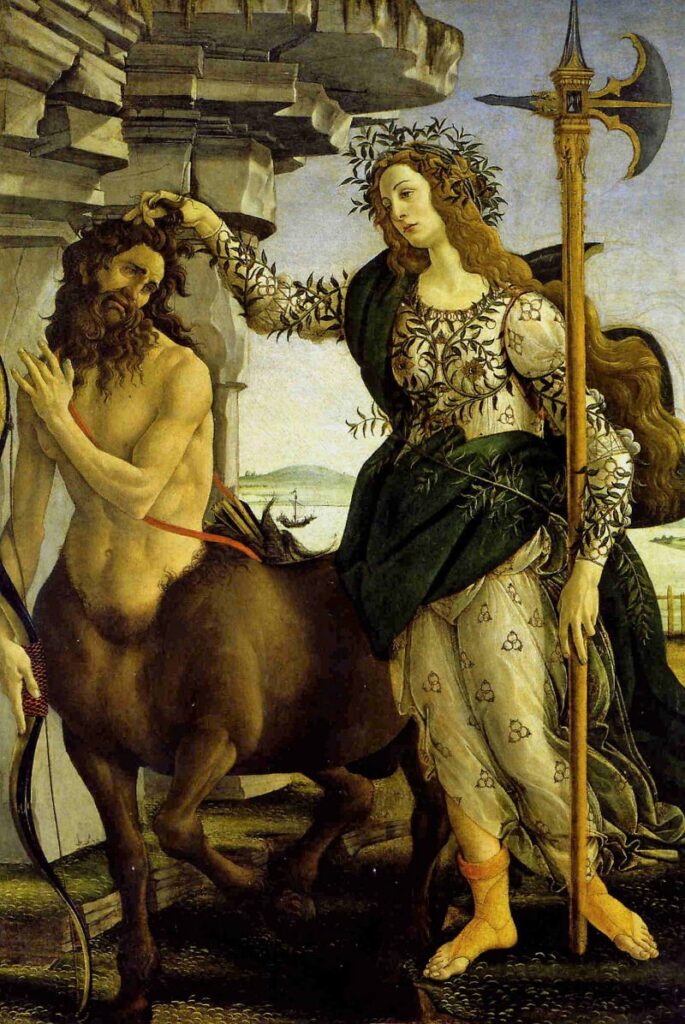
The painting depicts Pallas Athena, the Greek goddess of wisdom and warfare. She confronts a centaur, half-man, half-horse who is preparing to hunt nymphs in forbidden territory.
Athena, holding a halberd and grasping the centaur’s hair, is shown as the land’s protector.
Her iconic olive tree, sacred to her, winds around her arms and body. The halberd emphasizes her warrior nature.
The Medici family’s emblem, three interlocking rings, is subtly incorporated into her attire. This links the work to their patronage.
The piece symbolizes the triumph of chastity (Athena) over lust (the centaur). It aligns with Botticelli’s broader mythological works, like Primavera and The Birth of Venus. These works cemented his lasting fame.
The Labyrinth
The labyrinth from the myth of Theseus and the Minotaur represents more than just a maze. It is a metaphor for a psychological journey. This journey involves navigating confusion, confronting inner demons, and emerging transformed.
Take a few minutes to observe this painting. Consider the deep storytelling shown through its visual dialogue.
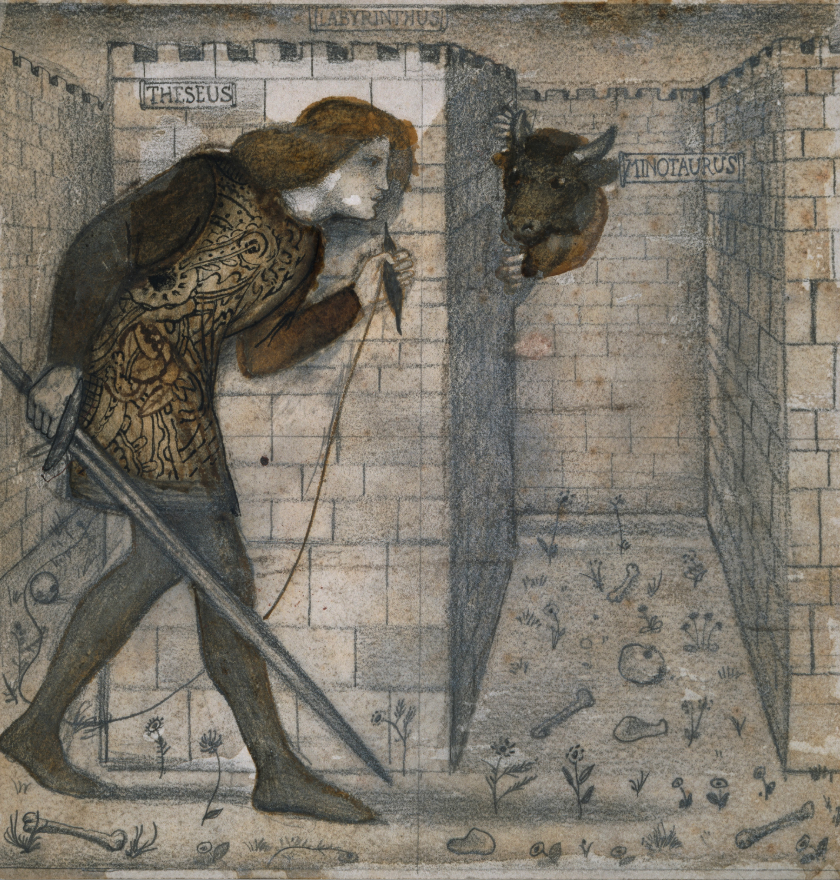
7 Key Insights
Theseus, the Greek hero, is depicted as the figure of order and civilisation. His poised and controlled stance, despite facing the monstrous Minotaur, shows the hero’s courage and wisdom. These qualities were highly valued in both Greek mythology and Victorian ideals.
Theseus holds a sword
A symbol of both power and responsibility, the sword is not just a weapon. It is also a tool for enforcing justice and order. This positions Theseus as a bringer of balance.
Sword symbolism is often found in religious texts. In the Bible moralisée of Vienna, the concept of Logos, often translated as “Word,” is shown as the divine principle shaping the cosmos.
Much like Theseus’ sword, which represents reason and justice, the Logos brings order and structure to the universe. It guides creation and imposes rationality on chaos.
In both cases, the sword and the Logos serve as tools for enforcing divine or moral law. They transcend chaos and restore balance through intellect, wisdom, and divine authority.
Minotaur’s animalistic nature
The Minotaur’s nature is uncontrolled and chaotic, driven by primal instincts and raw aggression. It embodies the untamed, wild side of human nature. Irrational, violent, and destructive. This animalistic force stands in stark contrast to reason and order.
Representation of Animal Instincts
The Minotaur, with the body of a man and the head of a bull, symbolises the primal forces that lurk within the human psyche. It represents unrestrained desire, violence, and irrationality. The Minotaur’s very nature is a product of violation and corruption. It was born from the union of Pasiphae and the bull, highlighting the theme of perversion and the breakdown of natural order.
The Labyrinth
The Minotaur is confined within a labyrinth, representing entrapment, confusion, and the complexity of human emotions and instincts. The labyrinth is a symbol of the struggle between human intellect (Theseus) and the dark, maze-like complexities of the subconscious or societal chaos.
The labyrinth, central to the myth, is a significant symbol in Burne-Jones’ painting. It represents the inner workings of the human mind or the journey through life’s trials and tribulations. Theseus must navigate the maze to overcome the Minotaur and achieve victory. This journey suggests that overcoming inner chaos requires perseverance, intelligence, and strength of character.
Light as Enlightenment
Burne-Jones uses light and shadow to reinforce the dichotomy between reason and chaos. Theseus is often bathed in light, symbolising enlightenment. The Minotaur is enveloped in shadow, suggesting darkness and the unknown. The interplay of light and darkness emphasises the dualities in the narrative: civilisation versus barbarism, order versus chaos, intellect versus primal instinct.
Red and Gold
The rich, warm tones of red and gold, often used in Burne-Jones’ work, convey both the intensity of the battle and the heroism of Theseus. Red, in particular, symbolises life force, energy, and action. Gold may suggest divine favour or the triumph of the virtuous.
Tension and Fate
The tension in the composition, with Theseus standing poised and resolute, creates a dramatic contrast with the savage, wild nature of the Minotaur. This dynamic captures the emotional essence of the myth—the moment of confrontation between rationality and chaos, civilisation and the wild.
The encounter between Theseus and the Minotaur also symbolizes fate. Theseus, as the hero destined to slay the beast, fulfills his role in the larger narrative of Greek myth. The myth reminds us of the inevitability of certain aspects of life, including the hero’s journey and the necessity of confronting one’s own darkness or fears.
Heroic Confrontation
Burne-Jones uses the story of Theseus’ heroic confrontation with the Minotaur to explore deep themes: civilisation versus barbarism, light versus darkness, and reason versus instinct. Through the labyrinth’s symbolism, the figures of Theseus and the Minotaur, and his masterful use of light and shadow, Burne-Jones offers a dramatic interpretation of this ancient myth. He highlights both its timeless and personal aspects.
For a deeper dive into the symbolism of mythological figures like Theseus and the Minotaur, check out my blog article on The Symbolism of the Minotaur.
The True Phoenix of Rebirth and Eternal Renewal
Though popularized in Roman and later Christian myth, the phoenix has Greek origins as a mystical bird that cyclically dies in flames and rises from its ashes. It represents immortality, renewal, and the power of reinvention.
Polishing artist José Clemente Orozco creates murals that often explore allegories and myths, including those from Greek mythology.
His mural Man on Fire often evokes the myth of the Phoenix as a symbol of rebirth, resilience, and triumph over adversity. Similarly, his depiction of Prometheus, the Titan who defied the gods to bring fire and knowledge to humanity, reflects themes of rebellion, sacrifice, and the transformative power of fire.
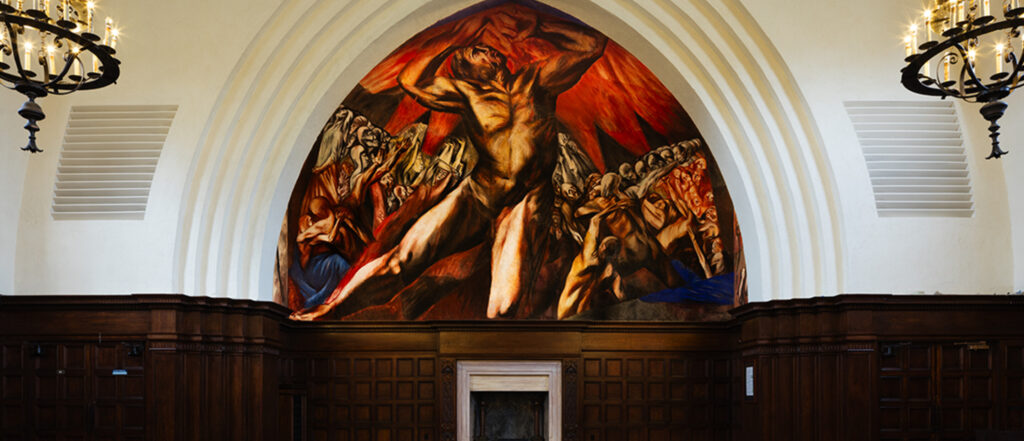
Three key symbolic traits stand out:
Fire as Knowledge and Power: The fire Prometheus brings is a central symbol, representing enlightenment, creativity, and the transformative power of knowledge. It stands for the spark of progress that challenges oppression and ignorance.
Prometheus as the Rebel: Prometheus himself symbolises defiance against authoritarian control. His act of stealing fire from the gods is a bold metaphor for challenging unjust systems and empowering humanity through truth and innovation.
The Human Struggle: The surrounding figures, often shown in anguish or reaching toward the flame, reflect the human condition—our yearning for freedom, understanding, and a better existence. They emphasise the cost and complexity of progress.
José Clemente Orozco’s fresco Prometheus (1930) is a powerful reinterpretation of Greek mythology, using the figure of Prometheus as a symbol of enlightenment, sacrifice, and defiance.
Watch this video for a brief introduction on the importance of Prometheus in Greek mythology.
Orozco aligns ancient myth with modern struggles for progress and social justice. The work highlights a key insight of Greek mythology: that the pursuit of truth and advancement often comes at great personal cost, making Prometheus not only a mythic rebel but a timeless symbol of human resilience and moral courage.
Both works embody Orozco’s use of myth as allegory, allowing him to comment on political and social struggles through enduring symbols like the Phoenix, which represents not only destruction but the potential for renewal and change.
Frequently Asked Questions About Greek Mythology
What is the main message of Greek mythology?
Greek mythology explores universal themes such as heroism, fate, love, and transformation. These stories were used to explain natural phenomena, cultural practices, and moral questions.
How is Greek mythology used in art?
Artists use figures from Greek mythology to symbolise deeper human struggles—wisdom (Athena), chaos (the Minotaur), and renewal (the Phoenix).
Why does Greek mythology still matter today?
Its characters and symbols offer timeless reflections on power, identity, and humanity, making them relevant to both ancient and modern storytelling.
